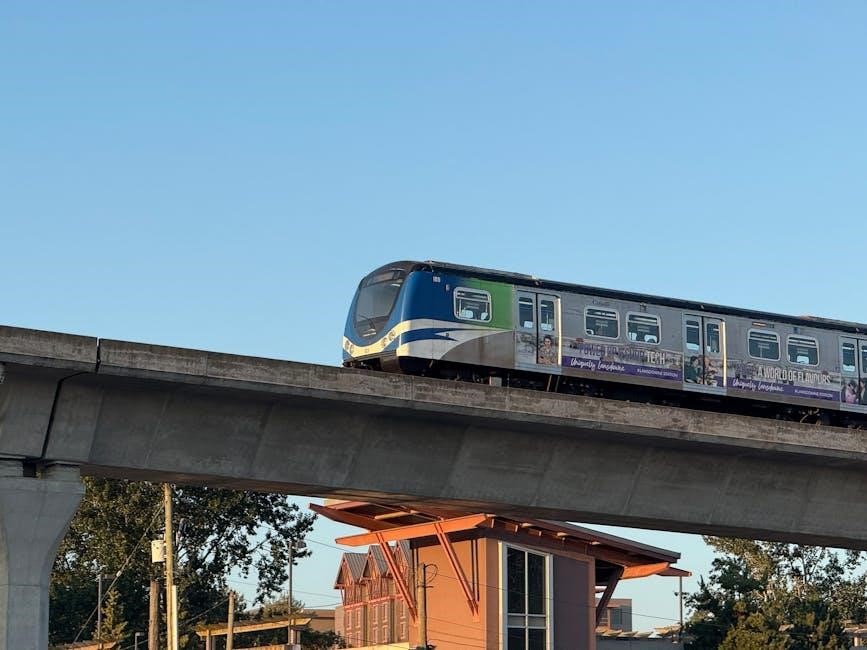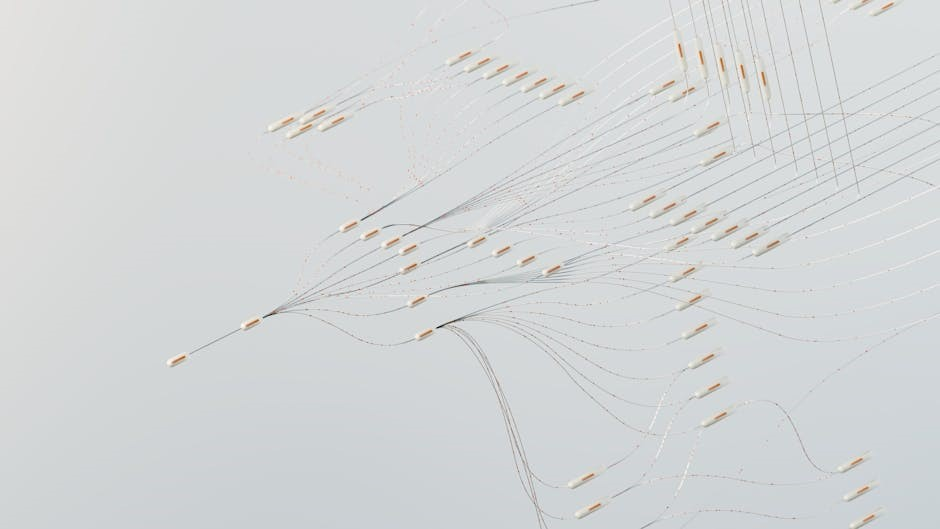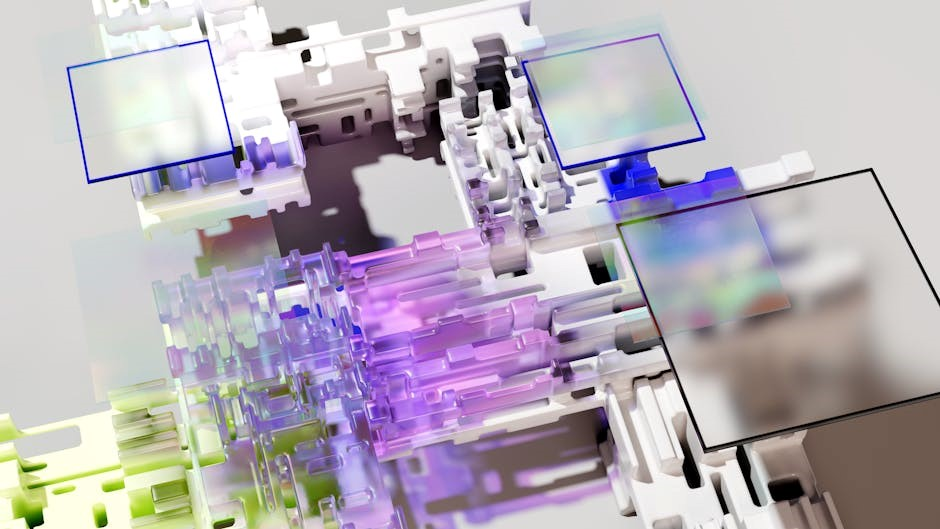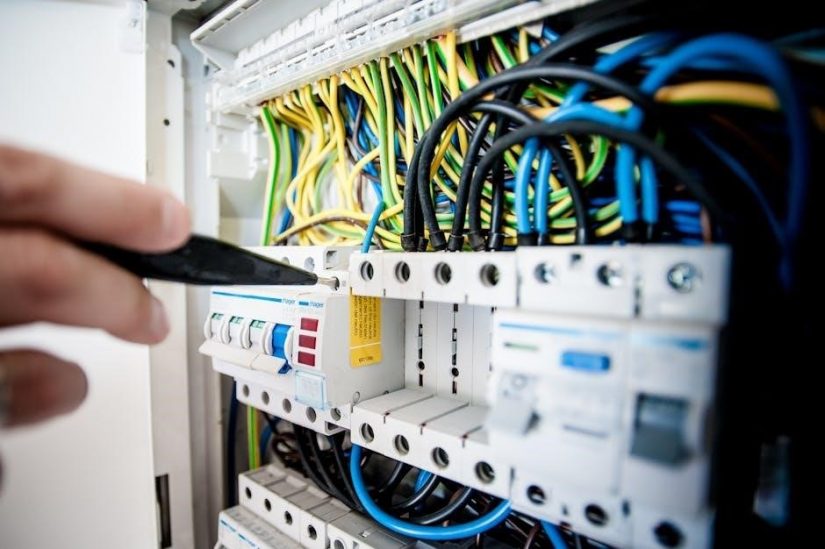The CompTIA Network+ N10-008 certification is a globally recognized credential validating foundational networking skills․ It covers essential topics like network design, security, and troubleshooting, preparing IT professionals for real-world challenges․ The N10-008 exam reflects the latest networking technologies and best practices, making it a critical step for those pursuing a career in IT infrastructure․ Official study guides and resources, such as the CompTIA Network+ N10-008 Study Guide, provide comprehensive preparation materials, including hands-on exercises and practice questions, ensuring candidates are well-equipped to succeed․
Importance of CompTIA Network+ Certification
The CompTIA Network+ certification is a globally recognized credential, validating expertise in networking concepts, security, and problem-solving․ It enhances career prospects by demonstrating a strong understanding of network infrastructure and troubleshooting․ As a vendor-neutral certification, it applies to various environments, making it highly valuable․ Earning this certification opens doors to networking roles and signifies a commitment to professional growth․ It is widely respected in the IT industry and provides a solid foundation for advanced certifications․
Overview of the N10-008 Exam
The N10-008 exam is the latest version of the CompTIA Network+ certification, designed to validate essential networking skills․ It consists of 90 questions, including multiple-choice and performance-based queries, to be completed in 90 minutes․ The exam covers five domains: networking fundamentals, network infrastructure, security, troubleshooting, and network technologies․ Candidates must score at least 720 out of 900 to pass․ This exam reflects current networking technologies, ensuring preparedness for real-world IT challenges and serving as a cornerstone for advanced certifications․

Exam Objectives and Domains
The N10-008 exam focuses on five core domains: networking fundamentals, network infrastructure, security, troubleshooting, and network technologies, ensuring comprehensive IT networking knowledge and practical skills․
Networking Fundamentals
Understanding networking fundamentals is crucial for the CompTIA Network+ exam․ This includes concepts like OSI and TCP/IP models, which explain how data moves through networks․ Key topics also cover IP addressing, subnets, and common protocols such as HTTP, FTP, and DNS․ Additionally, grasping network topologies (e․g․, star, mesh) and basic network devices like routers and switches is essential․ These foundational elements form the basis of network design, configuration, and troubleshooting, ensuring a solid start for IT professionals․
Network Infrastructure
Network infrastructure encompasses the physical and logical components that enable communication between devices․ Key elements include network devices like routers, switches, and firewalls, as well as physical cabling such as Ethernet cables and fiber optics․ Understanding network topologies (e․g․, star, mesh, bus) and wireless technologies like Wi-Fi is essential․ This infrastructure supports data transmission, scalability, and reliability, forming the backbone of modern networks․ Proper design and maintenance ensure optimal performance and connectivity for organizations of all sizes․
Network Security
Network security focuses on safeguarding data and infrastructure from unauthorized access and threats․ Key concepts include firewalls, intrusion detection systems, and encryption technologies․ Implementing access control measures like VLANs and role-based access ensures only authorized users can access resources․ Understanding common threats such as malware, phishing, and DDoS attacks is crucial․ Best practices like regular updates, secure configurations, and user training help maintain a robust security posture․ These strategies protect sensitive information and ensure network reliability and integrity․
Troubleshooting and Maintenance

Troubleshooting and maintenance are critical for ensuring network reliability and performance․ Identifying common issues like connectivity problems, latency, and hardware failures requires systematic approaches; Methodologies such as identifying symptoms, isolating problems, and implementing solutions are essential․ Tools like packet sniffers, network monitors, and diagnostic software aid in detecting and resolving issues․ Regular maintenance tasks, including firmware updates, cable checks, and backup configurations, prevent downtime․ These practices ensure networks operate efficiently, minimizing disruptions and enhancing overall performance․

Study Materials and Resources
The Official CompTIA Network+ Study Guide is the primary resource for exam preparation, offering in-depth coverage of all exam objectives․ Additional materials include recommended practice exams, online courses, and community forums for collaborative learning and support․
Official CompTIA Network+ Study Guide
The Official CompTIA Network+ Study Guide is a comprehensive resource designed to prepare candidates for the N10-008 exam․ It covers all exam objectives, including networking fundamentals, infrastructure, security, and troubleshooting․ The guide provides detailed explanations, hands-on exercises, and real-world examples to reinforce learning․ Additionally, it includes practice questions and assessment tools to help gauge readiness․ As the official study material, it aligns perfectly with the exam content, making it an essential tool for self-study and structured learning․
Recommended Practice Exams
Recommended practice exams for CompTIA Network+ N10-008 are essential for assessing readiness and familiarizing candidates with the exam format․ These exams simulate real-world scenarios, covering topics like networking fundamentals, security, and troubleshooting․ They include multiple-choice questions, performance-based simulations, and drag-and-drop tasks․ Platforms like CompTIA’s official practice exams, Quizlet, and third-party providers offer authentic test experiences․ Regularly taking practice exams helps identify knowledge gaps and builds confidence in problem-solving skills, ensuring a stronger performance on the actual exam․
Online Courses and Tutorials
Online courses and tutorials are valuable resources for preparing for the CompTIA Network+ N10-008 exam․ Platforms like Udemy, Coursera, and Pluralsight offer comprehensive courses covering networking fundamentals, security, and advanced topics․ These courses often include video lessons, hands-on labs, and downloadable materials․ They provide interactive learning experiences, allowing candidates to grasp complex concepts at their own pace․ Many courses also include access to practice exams, ensuring learners are well-prepared for the actual test․ These resources are ideal for self-paced learning and complement traditional study guides effectively․
Community Forums and Study Groups
Community forums and study groups are invaluable resources for CompTIA Network+ N10-008 preparation․ Platforms like Reddit, LinkedIn groups, and specialized IT forums provide spaces for networking professionals to share knowledge, discuss challenges, and offer tips․ Study groups allow learners to collaborate, ask questions, and gain insights from real-world experiences․ These communities often share study materials, including PDF guides and practice questions, helping members stay updated and prepared for the exam․ Active participation can enhance understanding and reduce study time significantly․

Exam Format and Structure
The CompTIA Network+ N10-008 exam consists of 90 questions, including multiple-choice and performance-based tasks․ Candidates have 90 minutes to complete the exam, focusing on networking concepts, security, and troubleshooting․
Question Types and Time Limits
The CompTIA Network+ N10-008 exam features multiple-choice questions and performance-based tasks․ Candidates have 90 minutes to complete 90 questions, reflecting their understanding of networking fundamentals, security, and troubleshooting․ Performance-based questions simulate real-world scenarios, testing hands-on skills․ Multiple-choice questions assess theoretical knowledge, while drag-and-drop and simulation-based tasks evaluate practical abilities․ Understanding these question types and time limits is crucial for effective preparation, as outlined in the CompTIA Network+ N10-008 Study Guide and practice exams․
Performance-Based Questions (PBQs)
Performance-Based Questions (PBQs) simulate real-world networking scenarios, requiring candidates to demonstrate practical skills․ These questions assess the ability to configure, troubleshoot, and manage network environments․ PBQs may include tasks like subnetting, setting up VLANs, or identifying security vulnerabilities․ They are timed and require critical thinking and problem-solving․ The N10-008 exam includes approximately 6 PBQs, and candidates must complete them within the 90-minute time frame․ Preparation for PBQs involves hands-on practice with networking tools and simulations, as recommended in the CompTIA Network+ N10-008 Study Guide․

Key Networking Concepts
The OSI and TCP/IP models form the foundation of networking, explaining data transmission layers․ Understanding IP addressing, subnetting, routing, and switching is crucial, along with protocols like HTTP, FTP, and DNS․
OSI and TCP/IP Models
The OSI (Open Systems Interconnection) and TCP/IP (Transmission Control Protocol/Internet Protocol) models are foundational frameworks for understanding network communication․ The OSI model consists of seven layers, while the TCP/IP model has four․ These layers define how data is transmitted, routed, and received across networks․ Understanding these models is essential for troubleshooting and designing efficient network architectures․ The OSI model provides a detailed breakdown, while the TCP/IP model focuses on practical, real-world applications, enabling seamless communication over the internet․ Mastery of these concepts is critical for networking professionals․
IP Addressing and Subnetting
IP addressing and subnetting are critical concepts in network configuration․ IP addresses uniquely identify devices on a network, while subnetting divides large networks into smaller, manageable subnets․ Understanding subnet masks, CIDR notation, and classless inter-domain routing is essential for efficient network design․ Proper subnetting enhances security, reduces broadcast domains, and optimizes address allocation․ Mastery of these techniques is vital for network administrators to ensure seamless communication and resource allocation across enterprise networks․ This knowledge is extensively tested in the CompTIA Network+ N10-008 exam․
Common Network Protocols
Common network protocols include TCP/IP, HTTP, FTP, and DNS, which are essential for communication and data transfer․ TCP/IP is the foundation of internet communication, while HTTP enables web traffic․ FTP facilitates file transfers, and DNS resolves domain names to IP addresses․ Understanding these protocols is crucial for network administration․ Additionally, protocols like HTTPS and SSH ensure secure communication, while DHCP dynamically assigns IP addresses․ Mastery of these protocols is vital for configuring and managing networks effectively, as emphasized in the CompTIA Network+ N10-008 exam materials․

Infrastructure Components
Infrastructure components include routers, switches, firewalls, and servers․ These devices form the backbone of network connectivity, enabling data transmission and management․ Proper configuration ensures seamless communication․
Network Devices and Their Roles
Network devices, such as routers, switches, and firewalls, play crucial roles in connecting and managing network traffic․ Routers direct data between networks, while switches connect devices within a LAN․ Firewalls secure networks by filtering traffic․ Access points enable wireless connectivity, and hubs simplify network extensions․ Understanding these devices is essential for designing and maintaining efficient, secure, and scalable networks, as outlined in the CompTIA Network+ N10-008 study materials․
Cabling and Topologies
Network cabling, such as UTP, STP, fiber optic, coaxial, and HDMI, forms the physical backbone of network connections․ Topologies like Bus, Star, Ring, Mesh, and Hybrid define how devices interconnect․ Star topology is most common, using a central hub․ Bus topology uses a single cable, while Ring connects devices in a loop․ Mesh offers redundancy but is complex․ Understanding cabling types and topologies is vital for designing efficient networks, as detailed in the CompTIA Network+ N10-008 study guide․
Wireless Networking Technologies
Wireless networking technologies enable devices to connect without physical cables, utilizing standards like Wi-Fi (802․11a/b/g/n/ac/ax) for high-speed data transmission․ Bluetooth and RFID are used for short-range communication․ Wireless networks rely on access points (APs) for centralized management, while ad-hoc networks connect devices directly․ Security protocols like WPA3 encrypt data, ensuring privacy․ Understanding signal interference, range, and configuration is crucial for deploying reliable wireless networks, as covered in the CompTIA Network+ N10-008 study materials․

Security Measures and Best Practices
Implementing robust security measures is critical to protect networks from threats․ Best practices include encryption, firewalls, and regular updates․ Compliance with policies ensures a secure network environment․
Common Security Concepts
Common security concepts in networking include firewalls, encryption, and access control․ Firewalls monitor traffic, blocking unauthorized access, while encryption secures data transmission․ Access control ensures only authorized users access resources․ These concepts are essential for protecting networks from threats and maintaining data integrity․ Understanding these fundamentals is critical for implementing effective security measures and passing the CompTIA Network+ N10-008 exam․
Network Security Devices
Network security devices are crucial for protecting networks from threats․ Firewalls control traffic, while intrusion detection/prevention systems (IDS/IPS) monitor and block malicious activities․ Virtual Private Networks (VPNs) encrypt data over public networks․ These devices are essential for securing infrastructure and are covered in the CompTIA Network+ N10-008 exam․ Understanding their functions and configurations is vital for implementing robust security measures and passing the certification․
Security Policies and Compliance
Security policies define rules and guidelines for network protection, ensuring compliance with regulations․ These policies cover access control, data encryption, and incident response․ Compliance involves adhering to standards like GDPR, HIPAA, or PCI-DSS․ Understanding these frameworks is essential for maintaining legal and ethical network operations․ The CompTIA Network+ N10-008 exam emphasizes the importance of implementing and managing security policies to safeguard network integrity and ensure organizational compliance with industry standards and legal requirements․

Troubleshooting Techniques
Troubleshooting involves identifying and resolving network issues efficiently․ It requires systematic approaches, such as isolating problems, testing hypotheses, and applying solutions․ Key tools include network analyzers and diagnostic software, enabling technicians to pinpoint and fix connectivity or performance issues effectively while minimizing downtime and ensuring optimal network functionality․
Common Network Issues
Common network issues include connectivity problems, slow performance, and configuration errors․ These issues often arise from misconfigured IP addresses, subnet masks, or default gateways․ Additionally, physical layer problems, such as faulty cables or malfunctioning NICs, can disrupt communication․ Wireless networks may suffer from signal interference or authentication failures․ Troubleshooting these issues requires identifying symptoms, isolating problems, and applying targeted solutions․ Understanding these common challenges is essential for network administrators to ensure reliable and efficient network operations, as emphasized in the CompTIA Network+ N10-008 curriculum․
Troubleshooting Methodologies
Troubleshooting methodologies involve systematic approaches to identify and resolve network issues․ Key steps include gathering information, analyzing symptoms, and isolating the problem․ Techniques like the “divide and conquer” method help narrow down the source of failures․ Documentation and structured checklists ensure consistency․ CompTIA Network+ emphasizes these strategies to efficiently diagnose and repair network faults, ensuring minimal downtime․ Mastering these methodologies is crucial for network administrators to maintain seamless connectivity and performance, as outlined in the CompTIA Network+ N10-008 exam objectives․
Essential Tools for Troubleshooting
Essential tools for troubleshooting include command-line utilities like ping, traceroute, and ipconfig for diagnosing connectivity and configuration issues․ Network analyzers such as Wireshark help capture and inspect traffic for deeper insights․ Hardware tools like cable testers and multimeters are vital for identifying physical layer problems․ Software tools like Netscout or SolarWinds monitor network performance, while PuTTY enables SSH connections for device management․ These tools, covered in the CompTIA Network+ N10-008 exam, are indispensable for efficient network troubleshooting and maintenance․

Preparation Strategies
Effective preparation involves creating a structured study schedule, utilizing official study guides, and taking practice exams to assess readiness․ Hands-on practice with networking tools and simulations builds practical skills, ensuring comprehensive understanding of exam topics like network fundamentals and security․ Regular review of key concepts and troubleshooting scenarios enhances problem-solving abilities, boosting confidence for the CompTIA Network+ N10-008 exam․
Effective Study Schedules
Creating a well-structured study schedule is crucial for success in the CompTIA Network+ N10-008 exam․ Allocate specific time slots for each domain, ensuring balanced coverage of topics like networking fundamentals, security, and troubleshooting․ Dedicate 2-3 hours daily, focusing on theoretical concepts in the morning and practical exercises in the evening․ Incorporate regular breaks to maintain focus and retention․ Use weekends for comprehensive reviews and practice exams to gauge progress and identify weak areas for improvement․ Stay consistent and adjust the schedule as needed to stay on track․
Utilizing Practice Tests
Practice tests are essential for assessing readiness for the CompTIA Network+ N10-008 exam․ They simulate real exam conditions, helping you gauge your knowledge and identify weak areas․ Regularly taking practice tests improves time management and reduces exam anxiety․ Focus on understanding incorrect answers to strengthen your grasp of key concepts․ Utilize official CompTIA resources, such as the CompTIA Network+ N10-008 Study Guide, to access authentic questions and ensure comprehensive preparation․ Consistent practice enhances confidence and performance․
Hands-On Practice Recommendations
Hands-on practice is crucial for mastering networking concepts․ Use tools like Cisco Packet Tracer or virtual lab environments to simulate real-world scenarios․ Configure routers, switches, and firewalls to gain practical experience․ Practice subnetting, VLANs, and troubleshooting techniques regularly․ Utilize the CompTIA Network+ N10-008 Study Guide for exercises and simulations․ Join online communities for additional resources and support․ Regularly test your skills with practical tasks to reinforce theoretical knowledge and ensure readiness for the exam․
Earning the CompTIA Network+ N10-008 certification is a significant milestone, enhancing your IT career prospects․ Use the CompTIA Network+ N10-008 Study Guide for comprehensive preparation․ Stay focused, practice consistently, and approach the exam with confidence to achieve success․
Final Tips for Success
- Thoroughly review the CompTIA Network+ N10-008 Study Guide to master key concepts․
- Practice consistently with realistic simulations and practice exams․
- Join study groups or forums for collaborative learning and problem-solving․
- Gain hands-on experience with networking tools and devices․
- Stay updated on the latest exam objectives and networking trends․
- Develop a structured study schedule and stick to it diligently․
- Focus on understanding practical applications of theoretical knowledge․
Encouragement and Next Steps
Earning the CompTIA Network+ certification is a significant achievement, opening doors to exciting career opportunities in IT․ Leverage this credential to pursue roles like network administrator or technician․ Consider advancing your skills with higher-level certifications, such as CompTIA Security+ or Cisco CCNA․ Consider joining professional networking groups or attending industry events to expand your knowledge and connections․ Finally, stay curious and committed to continuous learning to thrive in the ever-evolving IT landscape․
